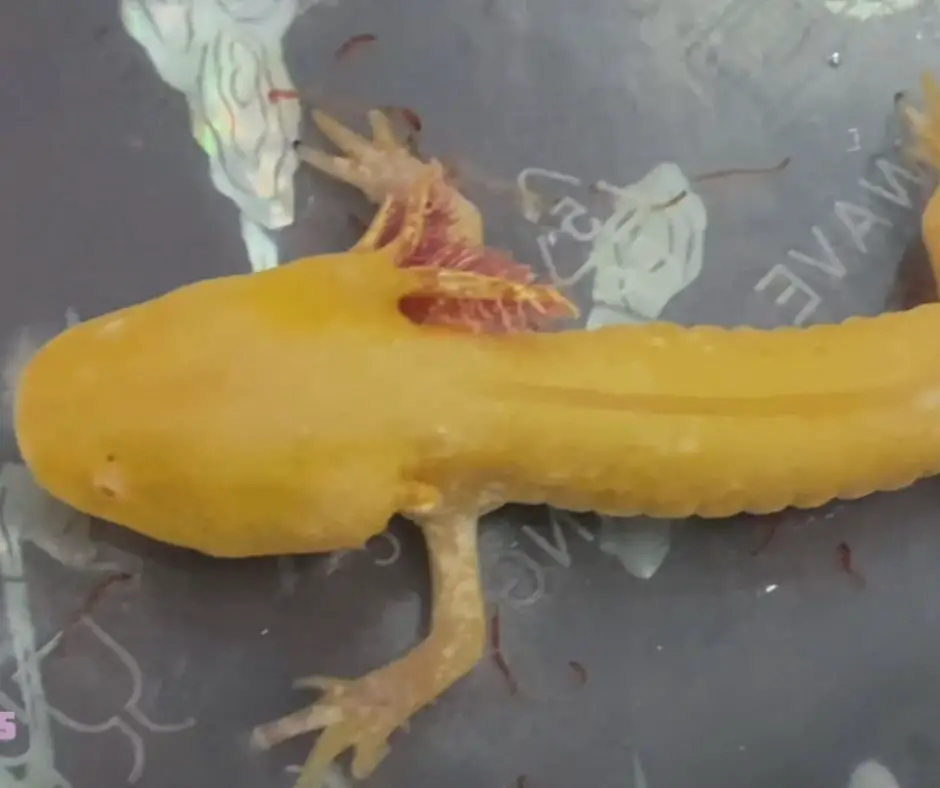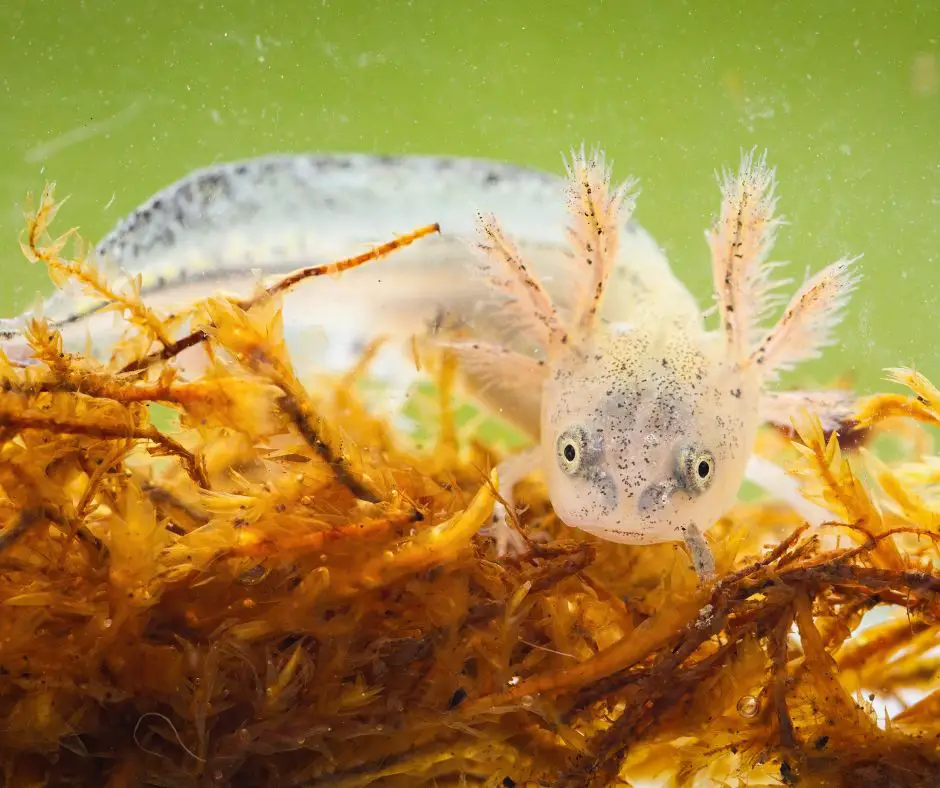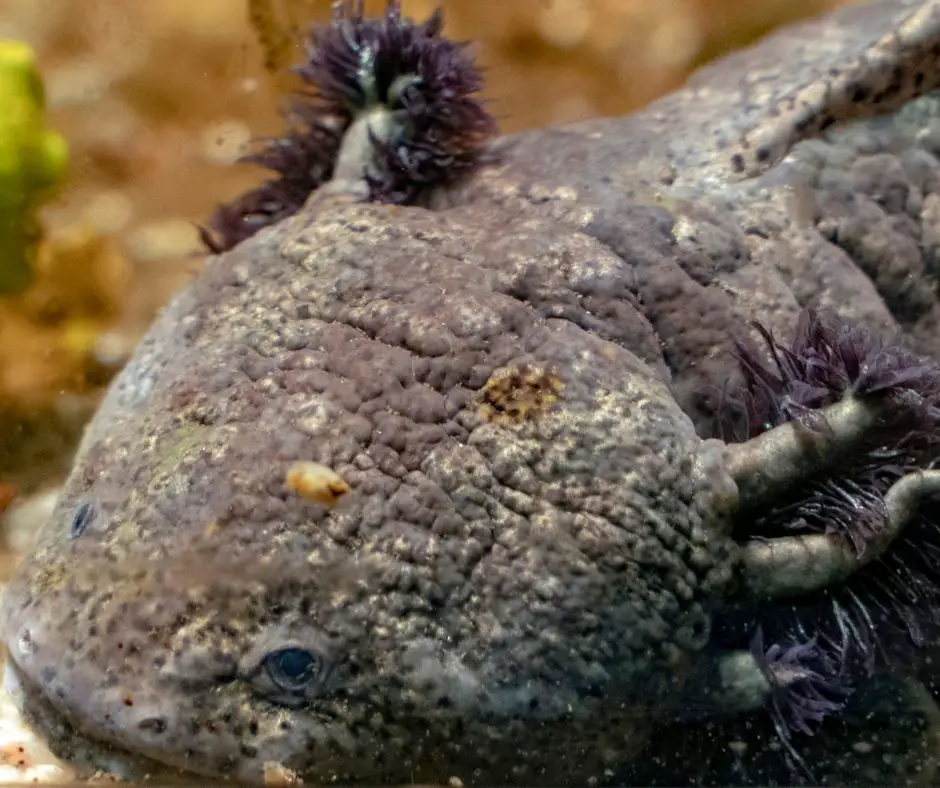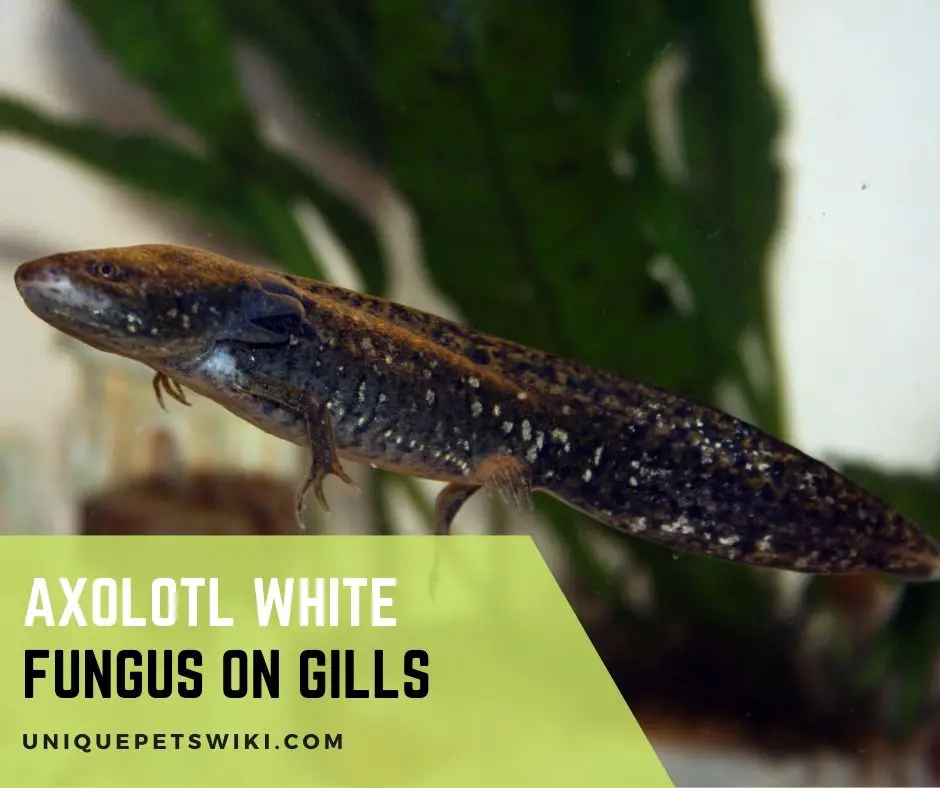As an axolotl owner, you want the best for your pet. An important aspect of ensuring your axolotl’s well-being is by ensuring that it looks healthy and has healthy skin and gills.
Unfortunately, axolotls often develop white fungus on their gills and skin. This is a common condition and, while worrisome, is also curable and preventable.
In this guide, we will be talking about the causes, signs, and symptoms of axolotl white fungus on gills. We will also talk about the treatment and ways to prevent it.
Contents
What Does Axolotl White Fungus Look Like?
There are several ways to identify fungal infections in axolotls. One of the most common signs is the appearance of white, fluffy, cotton-like balls on its gills.
Sometimes, these white tufts may even be present on other parts of the axolotl’s body and they resemble whitish-furry fungus that we see on rotting fruit skin.
Axolotl gill fungus, if left untreated, could lead to tissue necrosis that leads to rapid degeneration of the gills, wound-like lesions all over the body, and whitened tips of the gills. It can even be fatal.

Axolotl Gill Fungus Symptoms (Saprolegnia)
The fungal infection that causes white fungus on axolotl gills is mainly attributed to a genus of mold known as Saprolegnia.
Saprolegnia is a fungal pathogen that commonly targets fish and salamanders such as axolotls – both in the tank and in the wild environments.
It spreads across the surface of the host animal in the form of cottony white fungus. If left untreated it can lead to secondary skin problems and even death.
Common signs and symptoms of Saprolegnia white fungus in axolotls are:
- Atrophied gills – wasting away or degeneration of the gills
- Refusal to eat – the fungal spores stress your axolotl’s system as a result of which, it may refuse food.
- Thinness – The affected axolotl starts losing weight due to lack of food. Resultantly, its gills also thin down.
- Injury – there may be wounds or lesions on its body.
- Loss of interest – an axolotl affected with white fungus might stop swimming and become inactive.
- Peeling skin – the lesions start peeling off and this is a clear sign of necrosis.
- Huge belly – a sick axolotl might not be able to poop. This can result in impaction or bloat.
- Cotton ball in the gills – axolotl develop furry white spots on their gills – these are the most obvious sign of Saprolegnia.
Why Do Axolotls Have White Stuff On Gills?
There are a number of causes of white fungus on gills in axolotls:
- warm water
- poor water parameters
- leftover food bits
- side effects of treatment
- weakness or injury

Warm Water
Warm water can reduce your axolotl’s immunity making it more susceptible to bacterial and fungal infections.
Ideally, the tank water should be between 60-64 F. You can consider using a water chiller or an aquarium cooler if you live in a hot climate.
Poor Water Parameters
Poor water parameters and toxins in the water can also result in fungal infections on your Axie’s gills.
If you do not have a water filter and forget to make water changes weekly, then exposure to toxic water over a prolonged period could result in the development of white cotton-like fungus on the pet’s skin.
Check out: 7 Best Water Filter For Axolotl
Leftover Food Bits
If you forget to remove uneaten food pellets or worms from the tank, it could get moldy over time. This too can result in fungal growth on your axolotl’s body.
Side Effects of Treatment
Sometimes, you may have treated your sick axolotl for some other issue – such as antibiotics for a bacterial infection.
Antibiotics end up killing the healthy bacteria which could result in weakened immunity. This could result in fungal skin issues and white fungus on the gills.
Weakness or Injury
A sick or injured axolotl could develop Saprolegnia infection due to a compromise in its immune system.
Tank Accessories
Moldy tank accessories such as hides, pipes, moldy rocks, etc. can also harm your Axie in numerous ways. They may lead to lesions, injuries, and abrasions on the pet’s skin.
Moreover, these objects could trap food and other decaying matter, becoming a breeding ground for microbes and harmful pathogens. Over time, this could result in fungal growth on your pet’s gills.
Kordon #37344 Methylene Blue-General Disease Prevention Treatment for Aquarium
- Kordon methylene blue 4oz
- Methylene blue is effective against superficial fungal infections of fishes
- The drug may be used as an alternative to malachite green for the control of fungus
Last update on 2022-12-29 / Affiliate links / Images from Amazon Product Advertising API
Axolotl White Fungus Treatment
Thankfully, axolotl white fungus is curable and preventable, especially if you act quickly.
You certainly need not cut off your Axie’s gills. There are simpler solutions than that and they do not include gill amputations.
Step 1: Quarantine Your Axie
This is important to prevent the infection from spreading to healthy Axolotls in the tank. Even if your pet is the sole occupant of its tank, it is best to remove it from the tank and fridge it.
Quarantining and isolation help in several ways: firstly, it helps you correct the cause of the infection. It may be poor water parameters, wrong water temperature, etc.
Secondly, it removes your pet from the toxic environment into a clean environment.
During the fridging/quarantine process, you can also focus on feeding your axolotl a healthy diet. That combined with clean, dechlorinated cold water can help your axolotl bounce back to good health.
Also read: How To Transfer Axolotl: 3 Tips to Prevent Temperature Shock
Step 2: Treat Mild Fungal Infections with Home Remedies
There are a couple of home remedies for eliminating mild white fungus on axolotl’s gills.
Firstly, lower its water temperature by placing it in a container with cool, dechlorinated water. Place the container in the fridge.
Secondly, place an Indian almond leaf in the container. Indian almond leaves are a proven remedy for curing fin rot in fish.
Indian almond leaves toughen its injured skin and also boost your axolotl’s immunity to fight the infection.
Some experts recommend a salt bath as another home remedy for white fungus in axolotls.
However, you need to be very careful when using this remedy since high concentrations of salt solution could damage your axolotl’s gills and may even result in bleeding, shedding of gill fimbriae, and skin lesions.
So, at all costs, if you do use a salt bath, avoid keeping your pet in it for prolonged periods.
You can use a tea bath for bathing your axolotl. Tea baths contain tannins which are acidic in nature. This acidic environment fights bacteria and viruses and removes the white fungus easily.
Also read: Types of Axolotl Bath: Complete Guide for Beginner
Step 3: Treating Larger Lesions
If your axolotl has very serious lesions with peeling skin and white cottony mold, then it may be best to see a vet who specializes in exotic pets.
You certainly do not want to reach a stage where tissue necrosis sets in as that could be fatal.
The vet might prescribe certain antifungal medications such as itraconazole. S/he may also give antibiotics to treat your buddy’s secondary skin infections.
Medicated baths of methylene blue can also help.
What Happens If Gill Fungus Is Untreated?
If you ignore white fungus on your axolotl’s gills and body, it could spread rapidly. Your pet’s beautiful gills will deteriorate and become bare.
Moreover, the fungus could lead to lesions and secondary skin infections that can even result in tissue necrosis. This can be fatal.
How to Prevent Axolotl White Fungus On Gills
White fungus on the axolotl’s gills is a common disorder but you can also prevent it with some simple steps.
- maintain cool water
- ensure proper water parameters
- perform regular water changes
- use safe accessories

Maintain Cool Water
Warm water facilitates the growth of the fungus. So you must maintain the water temperature between 60-64 F. If needed, invest in an aquarium chiller or water tank cooler.
Also read: How To Keep An Axolotl Tank Cold
Ensure Proper Water Parameters
Test the water from time to time using water testing kits. These days, you get water testing kits that help you perform hundreds of tests.
Ensure that the tank water pH is between 7.2 to 7.4. This slightly acidic pH is essential to kill bacteria and fungi.
Also read: pH for Axolotl and Tips to Maintain
Perform Regular Water Changes
Whether or not you have a water filter or bubbler in your axolotl’s tank, ensure that you manually change at least 20% of the water weekly. Never keep your buddy in toxic water for prolonged periods.
Also read: Full Requirements & Water Conditions for Axolotl in Captivity
Use Safe Accessories
To prevent injuries on your axolotl, make sure you use safe accessories. If introducing new accessories like driftwood or rocks, boil them first before introducing them to the tank.
Ensure there are no abrasive or sharp edges that could lead to cuts or wounds on your pet’s body.
Also read: 6 Best Axolotl Accessories
Perform UV Sterilization
UV sterilization lamps kill bacteria, viruses, and algae in the tank and make the water cleaner. Use the lamps as directed.
Some products are submersible but you must only introduce them in the filtration area far away from the axolotl.
Aquarium Clean Light Submersible Waterproof Lamp Water Clean Green Algae Clear
- 【 Warm Tip 】Due to the long transportion, after receiving the parcel, please check carefully whether the bulb is intact, if broken or have any crack mark, please contact our service mailbox on the package, we will send new replacement parcel in 24 hours.
- 【 Fast Clean 】254nm wavelength light help to remove the green in the fish tank, pond, make it clear. 175cm long cable, on/off switch, includes 2 suction feet
- 【 Lamp Size 】 110Voltage 11W: 10.24 inch * 0.79 inch, suitable for Max 3000L fish tank/pond, use 1-2 hours a day, it is better to adjust the use time according actual situation of water
- 【 WARNING 】 Light Will Kill Fish if don't separate the fish from the lights! Recommended to use this lamp in aquarium filter system
- 【 Warranty Promise 】 1 year warranty, 3 month free return, any problem please contact the service mailbox on the package, we will solve and reply in 24 hours.
Last update on 2022-12-29 / Affiliate links / Images from Amazon Product Advertising API
Conclusion
You must not overlook axolotl white fungus on the gills. Failure to take prompt corrective action could result in tissue necrosis. It can even kill your axolotl.
We hope this guide helps you prevent and treat the skin disorder before it spirals out of control.


